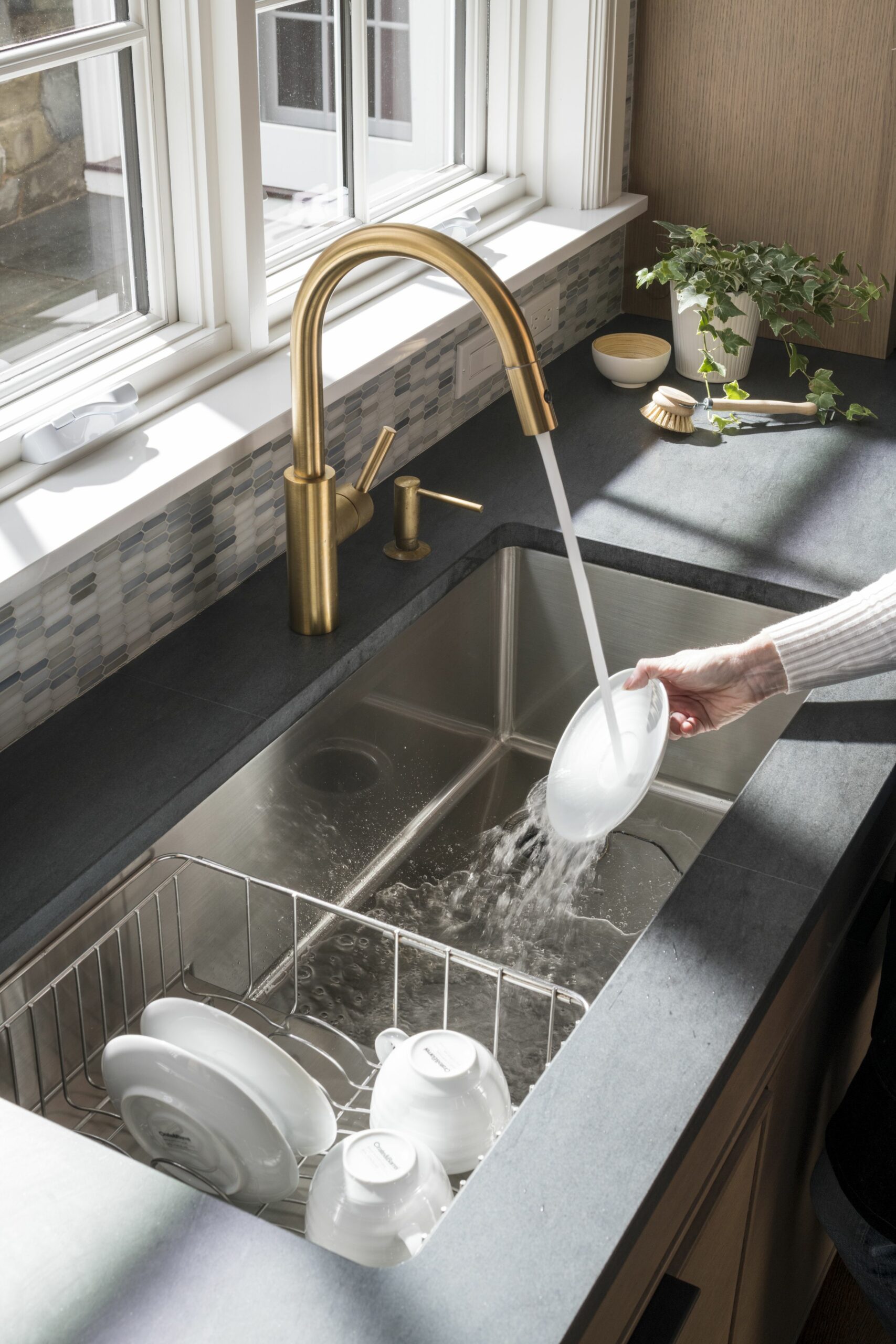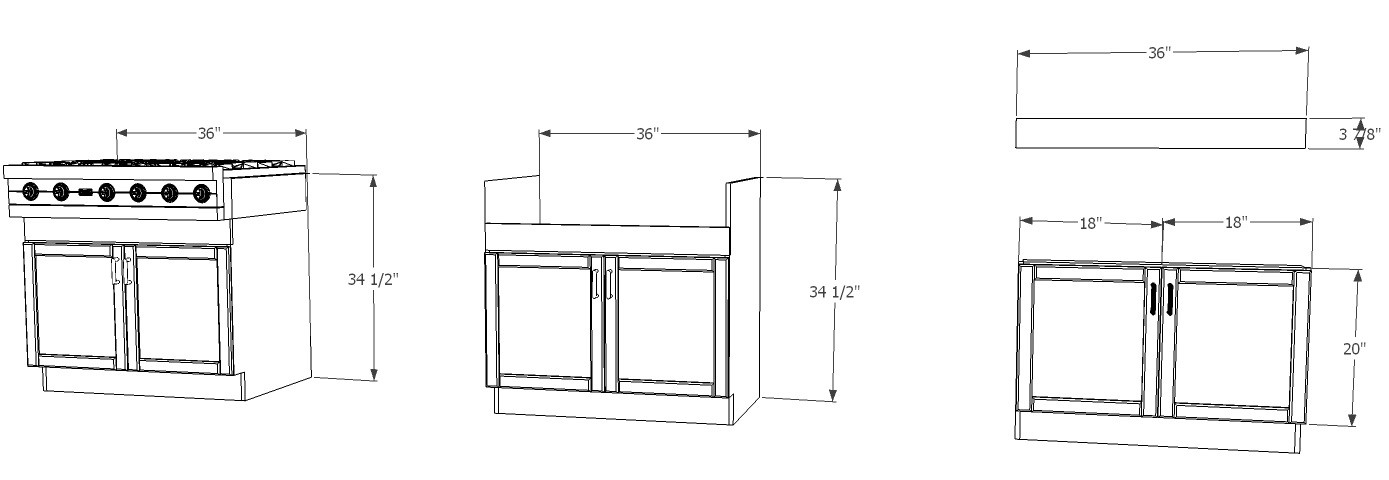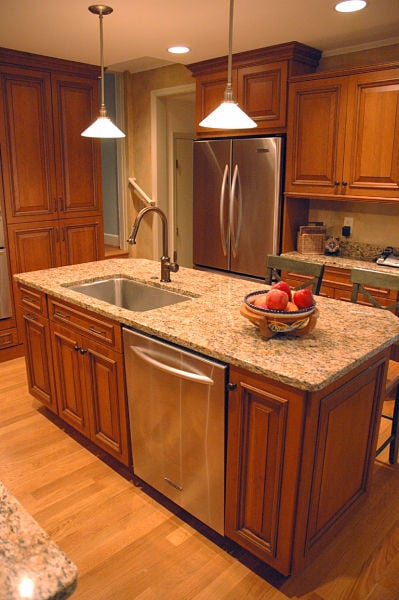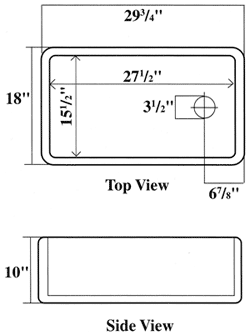Choosing the right size kitchen sink unit is crucial for ensuring functionality and efficiency in your kitchen. The size of your sink unit will depend on various factors, including the size of your kitchen, your cooking and cleaning habits, and the available space for installation. Understanding the different sizes and configurations of kitchen sink units can help you make an informed decision that meets your needs and fits seamlessly into your kitchen layout.

Standard Kitchen Sink Sizes
Standard kitchen sink units come in a range of sizes to accommodate different kitchen layouts and user preferences. The most common sizes for kitchen sinks are single bowl, double bowl, and triple bowl configurations. Single bowl sinks are typically the smallest option and are ideal for compact kitchens or use as a secondary sink in larger kitchens. Double bowl sinks feature two separate bowls of equal size, providing versatility for multitasking and food preparation. Triple bowl sinks offer even more functionality with three separate bowls, making them ideal for busy households or avid cooks who require ample workspace.
In addition to bowl configurations, kitchen sinks also vary in width, depth, and overall dimensions. Standard widths for kitchen sinks range from 22 to 36 inches, while depths typically range from 8 to 10 inches. The size of the sink unit you choose will depend on your personal preferences and the size of your kitchen cabinets and countertops. It’s essential to measure the available space carefully and consider how the sink unit will fit into your kitchen layout before making a purchase.

Large vs. Small Kitchen Sink Units
When deciding between a large or small kitchen sink unit, it’s essential to consider your specific needs and cooking habits. Large sink units offer more workspace and capacity for washing dishes, pots, and pans, making them ideal for busy households or avid cooks who frequently prepare large meals. They also provide more flexibility for soaking and rinsing dishes, reducing the need for multiple sink loads.
On the other hand, small sink units are more space-efficient and are ideal for compact kitchens or for use as a secondary sink in larger kitchens. They can still provide ample functionality for everyday tasks such as washing fruits and vegetables, rinsing dishes, and washing hands. Additionally, small sink units can help maximize counter space for food preparation or other tasks, making them a practical choice for kitchens with limited square footage.

Customizing Sink Unit Sizes
While standard kitchen sink units are readily available in various sizes and configurations, homeowners also have the option to customize their sink units to fit their specific needs and preferences. Many manufacturers offer custom sizing options for kitchen sinks, allowing you to create a sink unit that perfectly fits your kitchen layout and lifestyle. Customization options may include choosing the number and size of bowls, selecting the material and finish of the sink, and adding accessories such as cutting boards, colanders, or drain racks.
Customizing your sink unit size allows you to maximize the functionality and efficiency of your kitchen while creating a unique focal point that reflects your style. Whether you prefer a large farmhouse sink for a rustic look or a sleek stainless steel sink for a modern aesthetic, custom sizing options ensure that your sink unit meets your exact specifications.

Considerations for Installation and Maintenance
When choosing a kitchen sink unit size, it’s essential to consider installation and maintenance requirements to ensure a seamless and hassle-free experience. Larger sink units may require additional support and reinforcement to accommodate the weight of the sink and water, so it’s essential to consult with a professional installer or contractor to ensure proper installation. Additionally, larger sink units may require more frequent cleaning and maintenance to keep them looking their best and prevent the buildup of dirt, grime, and food particles.
Proper maintenance is crucial for prolonging the lifespan of your kitchen sink unit, regardless of size. Regular cleaning with a mild soap and water solution is recommended to remove dirt, grease, and stains from the surface of the sink. Avoid using abrasive cleaners or harsh chemicals, as they can damage the finish of the sink and corrode the material over time. Additionally, inspect the sink unit regularly for any signs of leaks, cracks, or damage, and repair or replace any worn or damaged components promptly to prevent further issues.

Common Mistakes to Avoid
Neglecting to Measure the Space: One common mistake is failing to measure the available space accurately before purchasing a kitchen sink unit, which can result in an ill-fitting or improperly installed sink.
Choosing the Wrong Bowl Configuration: Selecting a bowl configuration that doesn’t suit your cooking and cleaning habits can lead to inefficiency and frustration in the kitchen. Consider your needs carefully before deciding on a single, double, or triple bowl sink unit.
Overlooking Installation Requirements: Installing a kitchen sink unit, especially a larger one, without proper reinforcement or support can lead to instability and potential damage to your cabinets and countertops.
Ignoring Maintenance Needs: Neglecting to clean and maintain your kitchen sink unit regularly can lead to the buildup of dirt, grime, and bacteria, affecting both the appearance and hygiene of the sink.

What is the standard size for a kitchen sink unit?
Standard kitchen sink units typically range in width from 22 to 36 inches, with depths ranging from 8 to 10 inches. However, sizes may vary depending on the specific manufacturer and model.
Can I install a larger sink unit in a small kitchen?
While it’s possible to install a larger sink unit in a small kitchen, it’s essential to consider the available space and how it will affect the functionality and flow of the kitchen. In some cases, a smaller sink unit may be more practical for compact kitchens.
What is the best material for a kitchen sink unit?
Kitchen sink units are available in various materials, including stainless steel, porcelain, cast iron, and composite granite. The best material for your sink unit will depend on your budget, aesthetic preferences, and maintenance requirements.
Can I customize the size of my kitchen sink unit?
Yes, many manufacturers offer custom sizing options for kitchen sink units, allowing you to create a sink unit that perfectly fits your kitchen layout and lifestyle. Contact the manufacturer or retailer for more information on customization options.
How do I know if my kitchen sink unit needs repairs or replacement?
Signs that your kitchen sink unit may need repairs or replacement include leaks, cracks, stains, and corrosion. If you notice any of these issues, it’s essential to address them promptly to prevent further damage to your sink unit and surrounding areas.

IKEA Kitchen Hack: A Base Cabinet for Farmhouse Sinks and Deep Cooktops

How to Design a Kitchen Island That Works

Corner Dishwasher Home Design Ideas, Pictures, Remodel and Decor

Kitchen Sink Depth Standard Size : How To Measure A Kitchen Sink The Home Depot / Most kitchen

Green Kitchen Enamel Sink Drainer Caravan Motorhome Boats Conversion – Sinks at National Caravan

Barclay Fire Clay Farmer & Kitchen Utility Sinks

Stainless Steel Cabinets SteelKitchen

Small Kitchen Ideas 2024

Related Posts:
- Leak Under Kitchen Sink Drain
- Stainless Steel Single Bowl Apron Farmhouse Kitchen Sink
- Premium Kitchen Sinks
- 18 X 18 Kitchen Sink
- Franke Composite Kitchen Sinks
- Kitchen Sink With Removable Divider
- Fix Low Water Pressure Kitchen Sink
- Kitchen Sink P Trap Installation
- Kitchen Sink Unit Sizes
- Kitchen With Farmhouse Sink Photos